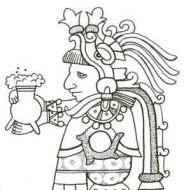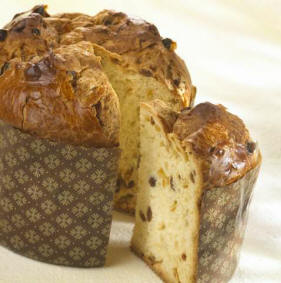Old Recipes
Recipe brought back by Cortez in 1528
- 700g cocoa
- 750g white sugar
- 56g (2 ounces) cinnamon
- 14 grains of Mexican pepper
- 14g cloves
- 3 vanilla pods
- 1 pinch of aniseed
- 1 hazelnut
- Nutmeg, grey amber and orange flower water
Recipe by Antonio Colmenero de Ledesma in 1644
- 100 cocoa beans
- 2 chilli's (black pepper can also be used)
- One pinch of aniseed
- " Ear flower " (can be replaced by powdered Alexandria roses mecasuchiles)
- 1 vanilla pod
- 60 g cinnamon
- 12 almonds
- 12 hazelnuts
- 450 g sugar
- Achiote
Recipe for the Grand Duke of Tuscany's famous jasmine chocolate
- 4.5 kg ground and roasted cocoa beans
- Fresh jasmine flowers
- 3.6 kg dry white sugar
- 85 g " perfect " vanilla pods
- 115 to 170 g " perfect " cinnamon
- 2.5 g grey amber
Method :
Place alternate layers of jasmine with layers of ground chocolate in a box, and leave to rest for 24h.
Then mix together and add more alternate layers of jasmine and cocoa and proceed in the same way.
Repeat the operation 10 to 12 times so that the cocoa really absorbs the scent of the jasmine.
Then add the other ingredients and grind this mixture on a warm metate. If the metate is too hot, the aroma may evaporate.
St. Disdier chocolate
Recipe 1 (very good) :
- 900 g cocoa
- 680 g brown sugar
- 20 g vanilla powder
- 14 g cinnamon powder
Recipe 2 (excellent) :
- 900 g cocoa
- 570 g sugar
- 28 g vanilla powder
- 15 g cinnamon powder
Recipe 3 (strong taste, for those who are not afraid of overdoing it) :
- 900 g cocoa
- 450 g fine sugar
- 9 g cinnamon
- 7 g powdered cloves
- 7 g chilli
- 35 g vanilla
Recipe from the Diderot et d'Alembert Encyclopaedia, 1751
- 4 table spoons chocolate
- 2 table spoons powdered sugar
- 3 pinches cinnamon
- 1 egg
Add water and milk and place in a bain-marie.
Finally, add a drop of orange flower water and two drops of amber essence.
Recipe recommended by the Spanish in the 17th Century
For 100 roasted, de-greased cocoa beans :
- 12 ground almonds and 12 ground hazelnuts
- Half a crushed " pain de sucre "
- A spoonful of honey
- Some aniseed grains
- Two Mexican peppercorns or Chilli seeds
- Six Alexandria roses
- One campêche pod
- Two " drachmas " of cinnamon
Recipe for a chocolate drink of maya origin

Today Mexican food is very popular all over the world. Try this drink.
You need :
- 100 gr of grated plain chocolate
- 600 ml milk
- 1 teaspoon of honey
- 2 drops of vanilla essence
- 1 tablespoon of corn flour or maize flour
- 4 tablespoons of cold water
- A sprinkling of powdered cinnamon
To make :
- In a sauce pan warm the chocolate, milk, sugar and vanilla, stirring all the time.
- Do not let it boil.
- Dissolve the corn flour in the water and add slowly to the sauce pan, still stirring.
- Whisk briskly until it bubbles and serve it hot, sprinkled with cinnamon.
Sacher Torte
Franz Sacher
The first chocolate cake was probably created by Franz Sacher, when he was a patissier to the Viennese Prince Klemens von Metternich. At the beginning of the 19th-century, Franz Sacher created the famous Sacher Torte. Klemens Wenzel Lothar von Metternich (15 may 1773 in Koblenz - * 11 June1859 in Vienna), Count then, since 1813, Prince of Metternich-Winneburg and since 1818, Duke of Portella, was an Austrian statesman and one of the most important diplomats of his time. He was a rationalist who did not believe in the century of light and detested the French Revolution.
Sacher Torte
Sachertorte is perhaps the world's most famous tart. This Viennese tart is a chocolate cake, filled with a marmalade of apricots and covered in a thick coating of chocolate. It is a product which is much exported. It comes in four different formats. Packed in small wooden boxes, it travels the entire world. Conservation is particularly long thanks to the thick coating. The tart is served with fresh cream which should be sweetened with vanilla sugar. You eat it with a cappuccino, a "grosser Schwarzer" (black coffee) or a "grosser Brauner" (coffee with cream).
Sachertorte was invented in 1832 by Franz Sacher who, at the time was a pupil in the kitchen of the Austrian politician Klemens von Metternich. The mission was simple: invent a new tart. Von Metternich did not want a light, frothy feminine tart, but something dry, more compact and masculine.
Sacher's solution created a sensation. Chocolate tart was of course well-known, but in combination with an apricot filling and a thick covering of chocolate on top , this one was something completely new. Such a thick coating and structure had never been used before. Thanks to his invention, Franz Sacher got a job in Budapest, but quickly came back to Vienna to work for Dehne, who supplied the Royal Court. Later he opened his own shop and took his recipe with him. Demel who, in the meantime, had taken over Dehne's business, continued to make the tart.
In 1876, Edward Sacher, Franz's son, opened a restaurant behind the opera house which later became the Hotel Sacher. The hotel soon became world-famous thanks to his wife Anna who was known as a very strong, energetic woman who smoked cigars.
After the Second World War, when the economy was very weak and any opportunity to improve market share was seized upon, a dispute broke out between Demel and Sacher over the original recipe. Demel did not fill the tart with the apricot jam, but placed it just below the chocolate coating He claimed that this was the original recipe and that Franz Sacher sold it to him when he left. After a long court case the judge pronounced that Sacher could be the one to sell the original tart. From that time on the hotel's tart was called Original Sacher-Torte. All the other bakers including Demel, could call their tart " Sachertorte ". The only difference from that moment on was the small hyphen. These days the Sacher bakery makes 800 tarts per day. It uses 1.2 million eggs a year. Three types of chocolate are used for the coating. Obviously they don't say which…
Recipe :
Cake mixture :
125 g pure chocolate (in pieces) 125 g cold butter, 150 g granulated sugar, 6 egg yolks and 6 egg whites (from large eggs at ambient temperature) a vanilla pod, 100 g sugar, 150 g flour.
Apricot filling :
Boil 250 g apricot jam with two dessert spoons of brown rum in a small pan, stirring continuously and allowing it to boil for two to three minutes until a homogeneous paste is obtained. Sieve and apply while still hot.
Chocolate coating :
Boil 300 g sugar, 175 ml water and 175 g pure chocolate in a pan. Stir continuously. Reduce the heat and allow to boil for 5 minutes stirring continuously. Take off the heat and continue to stir for one minute until the mixture is a little cooler. Use directly. Do not scrape the bottom of the pan.
Preparation :
Heat the oven to 200°C. Grease the sides of a cake tin and sprinkle with flour. Cover the bottom with baking paper. Melt the chocolate in a Bain-Marie and allow to cool a little, stirring continuously. Mix the butter in a mixer for one minute to obtain a frothy mix. Add the sugar, mixing slowly. Then mix for another two minutes at high speed until the mixture becomes clear and frothy. Add the egg yolks one by one, then the melted chocolate and vanilla pod.
Lightly beat the egg whites with the sugar. Mix approximately one quarter of the egg whites with the chocolate. Then mix in the remaining egg whites into the dough leaving small white flecks still visible. Sift the flour in 2 portions above the mixture and mix again. Pour the mixture into the cake tin. Bake in the middle of the oven for 45 minutes.
Slice the tart horizontally and fill with the apricots. Put the two pieces back together again and cover the tart with the rest of the apricot coating. Allow the apricot to cool until it becomes uniform and solid. Make the chocolate coating and pour evenly over the tart. Allow to dry and put the tart on a plate. Let it cool for at least one hour so that the coating solidifies. Take the tart out of the fridge an hour before serving and serve with a spoonful of Schlagobers (whipped cream flavoured with vanilla sugar).
The story of a romantic Italian tale : Panettone

To celebrate Christmas, Ludovico il Moro, the duke of Milan, invited all the town's nobility to a sumptuous banquet in his castle. The banquet lasted several hours until it was time for the dessert, which was to have been prepared with the greatest of care. Nonetheless, the dessert was burnt … and the chef knew this could only result in a death sentence for himself and all his assistants !
Luckily, a boy named Tony, who was an apprentice cook and in love with the chef's daughter, came forward and explained that he had prepared a dessert containing raisins and candied fruit for himself and the servants of the castle. He gave it to the chef and this is how the "Pane di Toni" arrived at the duke's table.
Everyone found this "pane" delicious and since then, the Milanese have always celebrated Christmas with "PANETTONE".